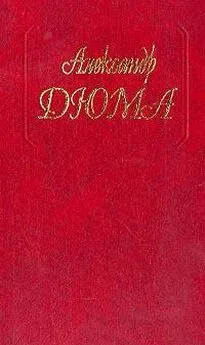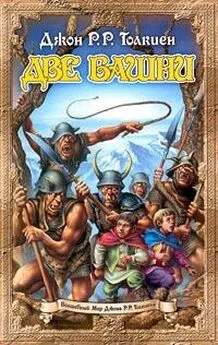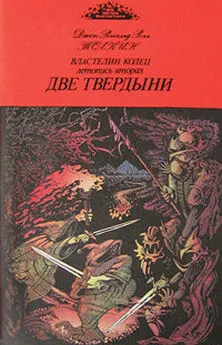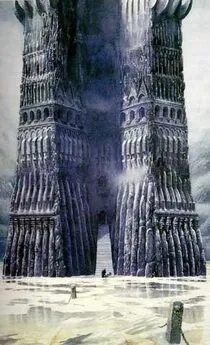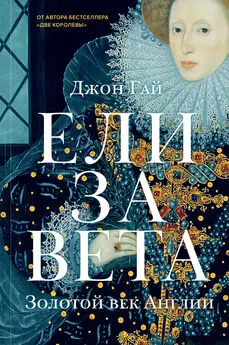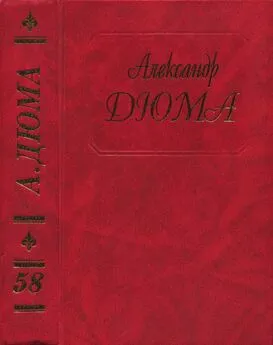Джон Гай - Две королевы
- Название:Две королевы
- Автор:
- Жанр:
- Издательство:КоЛибри, Азбука-Аттикус
- Год:2019
- Город:Москва
- ISBN:978-5-389-16133-7
- Рейтинг:
- Избранное:Добавить в избранное
-
Отзывы:
-
Ваша оценка:
Джон Гай - Две королевы краткое содержание
Две королевы - читать онлайн бесплатно ознакомительный отрывок
Интервал:
Закладка:
Sadler State Papers (1809). The State Papers and Letters of Sir Ralph Sadler, ed. Arthur Clifford, 2 vols. (Edinburgh).
[Salisbury MSS] (1883–1976). Historical Manuscripts Commission, Calendar of the Manuscripts of the Most Honourable the Marquis of Salisbury, 24 vols. (London).
[Scotland] (1718). Theatrum Scotiae: Containing the Prospects of His Majesties Castles and Palaces (London).
Scottish Correspondence (1927). The Scottish Correspondence of Mary of Lorraine. Including some Three Hundred Letters from 20 February 1542–1543 to 15 May 1560, ed. A. I. Cameron, Scottish History Society, 3rd series, vol. 10 (Edinburgh).
Selve, G. de (1543). Les Vyes de Huict Excellens Personnaiges Grecz et Romains (Paris).
State Papers (1830–1852). State Papers during the Reign of Henry VIII, 11 vols., Record Commission (London).
STC 2 (1976–1991). A Short-Title Catalogue of Books Printed in England, Scotland and Ireland, and of English Books Printed Abroad, ed. W. A. Jackson, F. S. Ferguson, and K. F. Pantzer, 2nd edn., 3 vols. (London).
Stevenson, J. (1837). Selections from Unpublished Manuscripts in the College of Arms and the British Museum illustrating the Reign of Mary, Queen of Scots, 1543–1568, Maitland Club, vol. 41 (Glasgow).
Strickland, A. (1844). Letters of Mary, Queen of Scots and Documents connected with her Personal History, 2nd edn., 2 vols. (London).
Tennyson, A. (1894). The Works of Alfred Lord Tennyson (New York and London).
Teulet, A. (1859). Lettres de Marie Stuart (Paris).
— (1862). Relations Politiques de la France et d’Espagne avec l’Écosse au XVIe siècle, 5 vols. (Paris).
Turnbull, W. (1845). Letters of Mary Stuart, Queen of Scotland (London).
Weber, B. C. (1969). The Marriage of Mary Queen of Scots to Francis the Dauphin of France 1558 (Greenock).
Wood, M. A. (1846). Letters of Royal and Illustrious Ladies of Great Britain, 3 vols. (London).
Adams, S. L. (1973). The Protestant Cause: Religious Alliance with the West European Calvinist Communities as a Political Issue in England, 1585–1630. Unpublished Oxford D. Phil. dissertation.
— (1987). The Release of Lord Darnley and the Failure of the Amity // Innes Review, 38, 123–153.
— (1991). Favourites and Factions at the Elizabethan Court // Princes, Patronage and the Nobility: the Court at the Beginning of the Modern Age c. 1450–1650, ed. R. G. Asch and A. M. Birke (Oxford), 265–287.
Alford, S. (1996). William Cecil and the British Succession Crisis of the 1560s. Unpublished St Andrews Ph. D. dissertation.
— (1997). Reassessing William Cecil in the 1560s // The Tudor Monarchy, ed. John Guy (London), 233–252.
— (1998a). The Early Elizabethan Polity: William Cecil and the British Succession Crisis, 1558–1569 (Cambridge).
— (1998b). Knox, Cecil and the British Dimension of the Scottish Reformation // John Knox and the British Reformations, ed. R. A. Mason (Aldershot), 201–219.
Armstrong Davison, M. H. (1965). The Casket Letters: A Solution to the Mystery of Mary Queen of Scots and the Murder of Lord Darnley (London).
Axton, Marie (1977). The Queen’s Two Bodies: Drama and the Elizabethan Succession Question (London).
Barwick, G. F. (1901). A Book Bound for Mary Queen of Scots, Bibliographical Society (London).
Basing, P. (1994). Robert Beale and the Queen of Scots // British Library Journal, 20, 65–82 Bassnett, Susan (1988). Elizabeth I: a Feminist Perspective (New York).
Beckett, M. (2002). The Political Works of John Lesley, Bishop of Ross. Unpublished St Andrews Ph. D. dissertation.
Bernard, G. W. (2000). Amy Robsart’ in Power and Politics in Tudor England, ed. G. W. Bernard (Aldershot), 161–174.
[Bibliothèque Nationale] (1931). Collection de Manuscrits, Livres, Estampes et Objects d’Art Relatifs à Marie Stuart, Reine de France et d’Écosse (Paris).
Bonner, E. (1996). The Recovery of St Andrews Castle in 1547: French Naval Policy and Diplomacy in the British Isles. English Historical Review, 111, 578–598.
— (1998). The French Reactions to the Rough Wooings of Mary, Queen of Scots // Journal of the Sydney Society for Scottish History, 6, 1–161.
— (1999a). The Politique of Henri II. De Facto French Rule in Scotland, 1550–1554 //Journal of the Sydney Society for Scottish History, 7, 1–107.
— (1999b). Scotland’s «Auld Alliance» with France, 1295–1560 // History, 84, 5–30
Bossy, J. A. (1959). English Catholics and the French Marriage, 1577–1581’ Recusant History, 5, 2–16.
— (1975). The English Catholic Community, 1570–1850 (London).
— (2001). Under the Molehill. An Elizabethan Spy Story (New Haven and London).
Bowler, G. (1984). An «Axe or an Act»: the Parliament of 1572 and Resistance Theory in Early Elizabethan England // Canadian Journal of History, 19, 349–359.
[British Medical Journal] (1968). Porphyria: a Royal Malady, British Medical Association (London).
Bryce, W. M. (1907). Mary Stuart’s Voyage to France in 1548 // English Historical Review, 22, 43–50.
Burns, J. H. (1992). Lordship, Kingship and Empire: the Idea of Monarchy, 1400–1525 (Oxford).
— (1993). George Buchanan and the Anti-Monarchomachs // Political Discourse in Early Modern Britain, ed. N. Phillipson and Quentin Skinner (Cambridge), 3–22.
— (1996). The True Law of Kingship: Concepts of Monarchy in Early-Modern Scotland (Oxford).
Cameron, J. (1998). James V. The Personal Rule, 1528–1542 (East Linton).
Carroll, S. (1998). Noble Power during the French Wars of Religion: the Guise Affinity and the Catholic Cause in Normandy (Cambridge).
Chamberlin, F. (1925). The Private Character of Queen Elizabeth (New York).
Chéruel A. (1858). Marie Stuart et Catherine de Médicis (Paris).
Collinson, P. (1987a). The English Captivity of Mary Queen of Scots (Sheffield).
— (1987b). The Monarchical Republic of Queen Elizabeth I // Bulletin of the John Rylands University Library of Manchester, 69, 394–424.
— (1995). The Elizabethan Exclusion Crisis // Proceedings of the British Academy, 84, 51–92.
— (1998a). One of Us? William Camden and the Making of History // Transactions of the Royal Historical Society, 6th series, 8, 139–163.
— (1998b). John Knox, the Church of England and the Women of England // John Knox and the British Reformations, ed. R. A. Mason (Aldershot), 74–96.
— (2003). William Camden and the Anti-Myth of Elizabeth: Setting the Mould? // The Myth of Elizabeth, ed. S. Doran and T. S. Freeman (London), 79–98.
Cowan, I. B. (1972). The Enigma of Mary Stuart (London).
— (1987a). Mary Queen of Scots (Edinburgh).
— (1987b). The Roman Connection: Prospects for Counter-Reformation during the Personal Reign of Mary, Queen of Scots, Innes Review, 38, 105–122.
Crane, Mary T. (1988). «Video et Taceo»: Elizabeth I and the Rhetoric of Counsel // Studies in English Literature, 28, 1–15.
Cressy, D. (1982). Binding the Nation: the Bonds of Association, 1584 and 1696 // Tudor Rule and Revolution, ed. D. J. Guth and J. W. McKenna (Cambridge), 217–234.
Croft, P. (2003). King James (London).
Croze, Joseph de (1866). Les Guises, Les Valois et Philippe II, 2 vols. (Paris).
Cust, L. (1903). Notes on the Authentic Portraits of Mary Queen of Scots (London).
Dack, C. (1889). The Trial, Execution and Death of Mary Queen of Scots (Northampton).
Davidson, P. (2001). The Casket Sonnets: New Evidence concerning Mary Queen of Scots // History Scotland, 1:1, 28–34.
Dawson, J. (1986). Mary Queen of Scots, Lord Darnley and Anglo-Scottish Relations in 1565 // International History Review, 8, 1–24.
— (1989). William Cecil and the British dimension of early Elizabethan foreign policy // History, 74, 196–216.
— (1991). The Two John Knoxes: England, Scotland and the 1558 Tracts // Journal of Ecclesiastical History, 42, 556–576.
— (1995). Anglo-Scottish Protestant Culture and Integration in Sixteenth-Century Britain // Conquest and Union: Fashioning a British State, 1485–1725, ed. S. G. Ellis and S. Barber (London), 87–114.
— (2002). The Politics of Religion in the Age of Mary, Queen of Scots: The Earl of Argyll and the Struggle for Britain and Ireland (Cambridge).
Diggle, H. F. (1960). The Casket Letters of Mary Stuart. A Study in Fraud and Forgery (Harrogate).
Donaldson, G. (1969). The First Trial of Mary Queen of Scots (London).
— (1971). Scotland: James V to James VII (Edinburgh).
— (1974). Mary Queen of Scots (London).
— (1983). All the Queen’s Men: Power and Politics in Mary Stewart’s Scotland (London).
Doran, Susan (1996). Monarchy and Matrimony: the Courtships of Elizabeth I (London).
Drummond, H. (1975). The Queen’s Man. James Hepburn, Earl of Bothwell and Duke of Orkney, 1536–1578 (London).
Duncan, T. (1905). The Queen’s Maries // Scottish Historical Review, 2, 363–371.
Durkan, J. (1987). The Library of Mary Queen of Scots // Innes Review, 38, 71–104.
Edington, C. (1994). Court and Culture in Renaissance Scotland. Sir David Lindsay of the Mount (Amherst, MA).
Edwards, F. (1968). The Marvellous Chance: Thomas Howard, Fourth Duke of Norfolk, and the Ridolfi Plot, 1570–1572 (London).
Elton, G. R. (1977). Reform and Reformation: England, 1509–1558 (London).
Forbes-Leith, W. (1885). Narratives of Scottish Catholics under Mary Stuart and James VI (Edinburgh).
Fraser, A. (1969). Mary, Queen of Scots (London).
Froude, J. A. (1912). The Reign of Elizabeth, 5 vols. (London).
Garrisson, J. (1995). A History of Sixteenth-Century France, 1483–1598 (London).
Geddie, J. (1911). Romantic Edinburgh, 2nd edn. (London).
Girouard, M. (1996). Hardwick Hall (London).
Goodare, J. (1987). Queen Mary’s Catholic Interlude // Innes Review, 38, 154–170.
— (1999) State and Society in Early Modern Scotland (Oxford).
Gore-Brown, R. (1937). Lord Bothwell (London).
Greengrass, M. (1987). Mary, Dowager Queen of France // Innes Review, 38, 171–194.
Guy, John (1988). Tudor England (Oxford).
— (1995). The Reign of Elizabeth I: Court and Culture in the Last Decade (Cambridge).
Harrison, J. (1919). The History of the Monastery of the Holy-Rood and the Palace of Holyrood House (Edinburgh and London).
Hay Fleming, D. (1897). Mary Queen of Scots from her Birth to her Flight into England (London).
Heisch, Alison (1992). Arguments for an Execution: Queen Elizabeth’s «White Paper» and Lord Burghley’s «Blue Pencil» // Albion, 24, 591–604.
Henderson, T. F. (1890). The Casket Letters and Mary Queen of Scots, 2nd edn. (Edinburgh).
Holmes, P. J. (1987). Mary Stewart in England // Innes Review, 38, 195–218.
Houlbrooke, R. A. (1994). Henry VIII’s Wills: a Comment // Historical Journal, 37, 891–899.
Ives, E. W. (1994). Henry VIII’s Will: the Protectorate Provisions of 1546–1547, Historical Journal, 37, 901–914.
— (1992). Henry VIII’s Will: a Forensic Conundrum // Historical Journal, 35, 779–804.
Jackson, R. A. (1984). Vive le Roi! A History of the French Coronation from Charles V to Charles X (Chapel Hill and London).
Jollet, E. (1997). Jean et François Clouet (Paris).
Jones, A. R. and Stallybrass, P. (2000). Renaissance Clothing and the Materials of Memory (Cambridge).
Jordan, Constance (1987). Women’s Rule in Sixteenth-Century British Political Thought // Renaissance Quarterly, 40, 421–451.
Kantorowicz, E. H. (1957). The King’s Two Bodies: A Study in Medieval Political Theology (Princeton, NJ).
Читать дальшеИнтервал:
Закладка:

